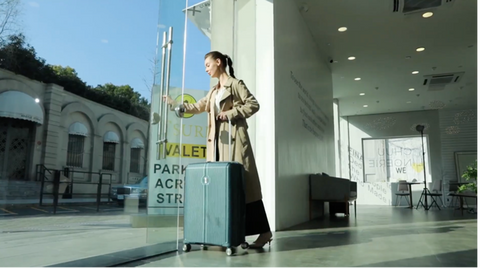Travel brings a sense of wanderlust, joy, and excitement for your future vacation experience. Packing your luggage? Not so much. In fact, most travelers wait until the day before their trip to even pack their luggage. This usually causes disorganization, wrinkles in poorly packed clothing, and in worse cases damaging your belongings.
Learning how to pack your luggage properly can save you time and money. As well as packing and making room to fit even more items in your suitcase! In this blog post, we will explore how to pack your luggage with different items. Dos & Don'ts of packing your luggage, and ensuring your luggage packing technique is approved by airport transit security.

Dos & Don'ts of Packing Your Luggage
Packing efficiently is crucial for a smooth and enjoyable trip. Here are some dos and don'ts to consider when packing your luggage:
Luggage Packing Dos
Make a packing list: Create a checklist of essential items to ensure you don't forget anything important.
Check the weather: Pack appropriate clothing based on the destination's weather forecast.
Roll your clothes: Rolling clothes can save space and reduce wrinkles compared to folding.
Use packing cubes: Organize your items into packing cubes to keep things neat and easily accessible.
Pack versatile clothing: Choose items that can be mixed and matched to create different outfits.
Pack travel-sized toiletries: To save space and comply with airline regulations, use small containers for your toiletries. In Canada, passengers cannot fly with any liquids, gels, or aerosol containers that have more than 100ml of product within the container.
Keep essentials in your carry-on: Pack medications, important documents, and a change of clothes in your carry-on in case your checked luggage is lost.
Pack chargers and adapters: Ensure you have the necessary chargers and adapters for your electronic devices.
Label your luggage: Attach a luggage tag with your contact information to easily identify your bags.
Leave room for souvenirs: If you plan on bringing back souvenirs, leave some extra space in your luggage.
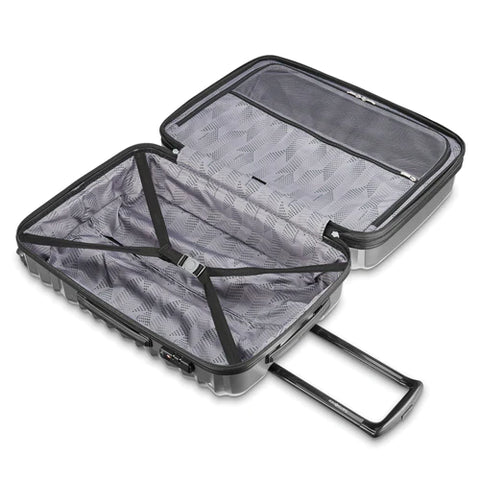
Luggage Packing Don'ts
Overpack: Avoid bringing more than you need; stick to the essentials to save space and make your luggage easier to manage.
Forget travel documents: Ensure you have your passport, tickets, and any necessary visas before leaving.
Pack valuables in checked luggage: Keep important items like electronics, jewelry, and important documents in your carry-on to minimize the risk of loss or theft.
Use bulky luggage: Opt for lightweight luggage to maximize your packing capacity while staying within airline weight limits.
Pack prohibited items: Familiarize yourself with airline regulations and avoid packing items that are not allowed in your luggage.
Wait until the last minute: Packing in a rush increases the likelihood of forgetting important items.
Bring full-sized toiletries: Instead, transfer your toiletries into travel-sized containers to save space and comply with airport security rules.
Pack items you can easily buy: If your destination has readily available items like toiletries or common clothing, consider buying them there to save space.
Ignore the weight limit: Check and adhere to airline weight restrictions to avoid extra fees.
Forget to secure liquids: Seal liquids in a plastic bag to prevent spills and make security checks easier.
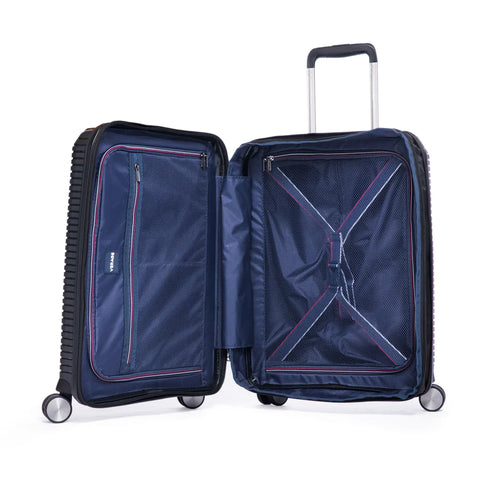
Remember to tailor these dos and don'ts based on your specific travel plans and personal preferences.

How to Pack Jewelry for Air Travel
When packing jewelry for air travel, it's essential to take precautions to ensure the safety and organization of your precious items. Utilizing a dedicated jewelry organizer or travel case with individual compartments helps prevent tangling and scratching. It's advisable to bring only the jewelry you plan to wear during your trip to avoid overpacking.
Place the jewelry organizer in a small pouch or bag for an added layer of protection.Secure delicate items by fastening clasps and consider wrapping each piece in a soft fabric, such as a jewelry pouch.
For small items like earrings or rings, a travel-sized pill container can keep them organized. Always pack your jewelry in your carry-on to reduce the risk of loss or theft, as checked luggage may undergo rough handling.
Additionally, take a photo inventory of your jewelry before packing and consider leaving high-value or irreplaceable pieces at home. It's crucial to avoid conspicuous organizers, keep jewelry with you at all times, and, if applicable, ensure your jewelry is covered by travel insurance. These precautions will help safeguard your jewelry during air travel.
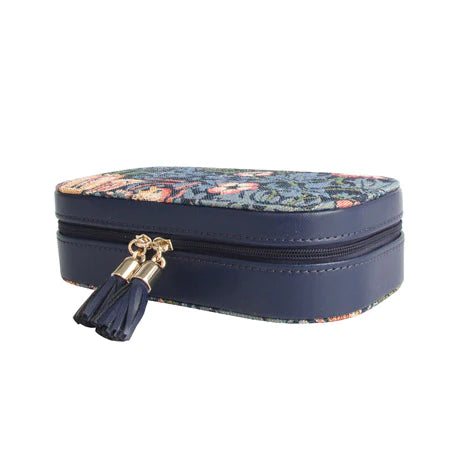
How to Pack Linen Shirts For Travel
When preparing linen shirts for travel, the goal is to keep them as wrinkle-free as possible. Start by laying the shirts flat and fastening the buttons. To minimize wrinkles, opt for rolling the shirts tightly from the bottom upward.

If folding is your preference, place tissue paper between the folds to reduce friction and the chance of creases. Pack the neatly rolled or folded shirts in your suitcase, ensuring a snug fit to prevent unnecessary movement during transit. Using packing cubes can be a handy way to both organize and compress the shirts, saving valuable space. For a fresh touch on arrival, consider placing a sachet of lavender or another mild-scented item among the shirts if compliant with travel security protocol.
It's always wise to check the weather at your destination to determine the appropriate number of shirts to pack. Once you reach your destination, hang the linen shirts and allow them some time to breathe, helping to minimize any lingering wrinkles from the journey.
How to Pack Diapers in Luggage
When packing diapers in your luggage, organization and accessibility are key. Begin by estimating the number of diapers you'll need for the duration of your trip, and then add a few extra, just in case. If you're traveling by air, consider the travel time, layovers, and any potential delays.

To save space, remove diapers from their bulky packaging and place them in a resealable plastic bag. This not only reduces the overall volume but also helps keep them clean. If you're using disposable wipes, you can store them in a travel-sized case or a resealable bag as well.
For cloth diapers, pack a compact wet bag to store used diapers until you can properly dispose of or launder them. Distribute diapers throughout your luggage, rather than packing them all in one place, to balance the weight. It's also a good idea to keep a few diapers in your carry-on bag for easy access during the journey.
Lastly, double-check if your destination has suitable diaper-changing facilities or if you need to bring additional supplies like changing pads.
How to Pack Food in Checked Luggage
Packing food in checked luggage requires careful consideration to ensure items remain fresh, intact, and compliant with travel regulations. Begin by selecting non-perishable and well-packaged items that won't spoil during transit. Dry snacks, such as nuts, granola bars, or individually wrapped treats, are good choices. Avoid packing liquids or perishable items that may leak or spoil.
Next, place the food items in sealed, airtight containers or resealable plastic bags to prevent spillage or contamination. Consider using sturdy containers that can withstand potential pressure changes during the flight.
If you're carrying fragile items like cookies or pastries, surround them with padding, such as bubble wrap or clothing, to prevent breakage. For bulkier items or those with irregular shapes, try to distribute them evenly throughout your luggage to avoid shifting during transport.
Check the destination country's customs regulations regarding food items, as some places have restrictions on bringing certain products across borders. It's essential to comply with these regulations to avoid any issues upon arrival.
Lastly, be mindful of weight restrictions for checked luggage imposed by airlines. Ensure that the weight of your packed food doesn't exceed the allowed limit to avoid additional fees.
Remember that certain items, like fresh fruits, vegetables, or meats, are better suited for local purchase at your destination due to potential restrictions and the risk of spoilage during travel. Always prioritize non-perishable, well-sealed items when packing food in checked luggage.
How to Fold Pants For Luggage
To fold pants for luggage, begin by laying them flat on a clean surface, ensuring the waistband is straight and even. Button and zip up the pants to maintain their shape during the folding process. Fold the pants in half lengthwise, aligning one side of the waistband with the other, creating a straight line from the waist to the hem.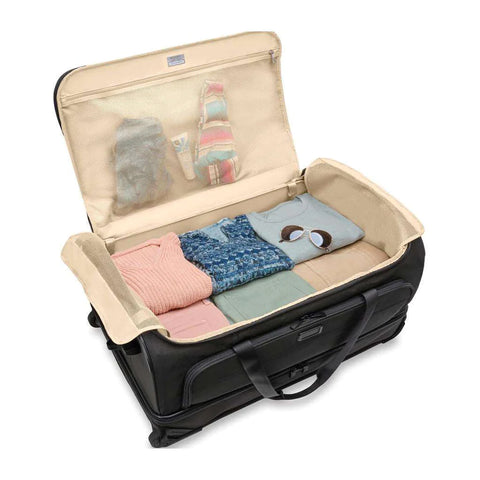
If the pants are long, fold them again by bringing the hem toward the waistband. Depending on your preference, either roll the pants from the waist down or fold them into a compact bundle. Rolling can help minimize wrinkles, while folding can be more space-efficient. Once folded, place the pants in your luggage, taking care to maximize space and minimize movement during transit.
If you prefer added organization, consider using packing cubes to keep the folded pants in a neat and easily accessible section of your suitcase. When packing, distribute your clothing evenly to balance the weight and prevent shifting during travel.
How to Pack Hats in Luggage
Packing hats in luggage necessitates a thoughtful approach to preserve their shape and integrity during travel. Begin by selecting sturdy hats that can withstand being packed without losing their form easily.
To maintain the crown's shape, stuff it with soft items like socks or underwear, ensuring it's filled adequately without distorting its original structure. Support the brim by placing it on a flat surface, and if it's flexible, reinforce it with a circular object like a rolled-up belt.
Pack the hat inside your luggage, surrounded by soft clothing items to provide an additional layer of protection. If you have a hat box, it's an ideal solution for safeguarding your hat; alternatively, consider using a drawstring bag to cover and protect the hat from dust and scratches.
When packing, try to place the hat on top of other items to minimize pressure. When you arrive, carefully inspect the hat for any signs of damage and reshape it if necessary using your hands. This method ensures your hats arrive at your destination in good condition.
How to Pack Laptop in Checked Luggage
Begin by powering down your laptop and unplugging any peripherals. Place the laptop in a padded laptop case or sleeve to shield it from potential impacts and scratches. If the case is not padded, consider wrapping the laptop in clothing or soft items for additional cushioning.
Position the laptop case in the center of your checked luggage, surrounded by soft items like clothes, to provide a buffer against external pressure. Avoid placing the laptop near the edges of the suitcase where it may be more susceptible to impacts. Make sure the laptop is well-insulated from all sides to minimize the risk of damage.
We recommend including a note inside the luggage indicating the presence of a laptop, in case security personnel need to inspect the contents. While this method can protect your laptop to some extent, keep in mind that carrying it in your carry-on bag is generally recommended to ensure better security and prevent potential damage in the checked luggage handling process.
How to Pack Shoes in Luggage
When packing shoes in your luggage, start by cleaning and ensuring they are dry to prevent odors and dirt transfer. To maintain their shape, stuff the toe area with items like socks or underwear.

If your shoes have dust bags or shoe bags, use them for protection, and if not, consider using plastic bags or shower caps to prevent the soles from contacting your clothes. Place the shoes at the bottom of your luggage, near the wheels, to create a stable base. Utilize empty spaces within the shoes by filling them with smaller items, optimizing your luggage space.
Arrange the shoes along the perimeter, heel to toe, to act as a protective barrier for items in the center. If bringing multiple pairs, pack the heavier shoes at the bottom to maintain balance. If you have a shoe organizer or compartmentalized luggage, use these features to keep shoes separate. For extra protection, consider placing shoes inside their original boxes.
By following these steps, you can efficiently pack your shoes, keeping them in good condition and ensuring they don't affect the cleanliness of your other belongings.
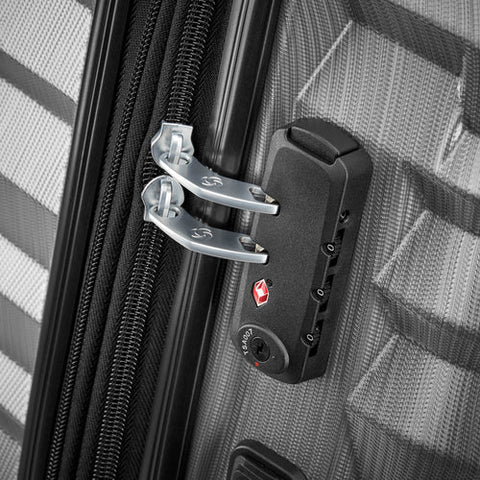
Conclusion
How to pack your luggage depends entirely on what you’re bringing, where you are travelling, your airline of choice, and if you are bringing carry-on or checked luggage. Staying mindful of these travel factors will help guide how you should optimally pack for your next adventure!
If you’re interested in purchasing a reliable carry-on or checked suitcase, bag, or any kind of luggage. Take a look at our luggage collection and contact us if you have any questions. Safe travels!



